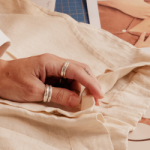The roots of interior design trace back to ancient civilizations. In ancient Egypt, for instance, interiors were adorned with rudimentary furniture and animal skins, marking the early beginnings of this timeless art form. Across the ages, interior design has evolved, reflecting the cultural and societal changes that have shaped human history.
Explore the fascinating journey of interior design’s history and origins in this blog.
Table of content
Interior Design History
Why is Interior Design Important
A Brief History of Interior Design
History of Interior Design Timeline
Top Designers
How to Become a Modern-Day Interior Designer
FAQs
Interior Design History
The history of interior decoration dates back to ancient civilizations, where design reflected culture, art, and lifestyle. Ancient Greek interior design played a key role, emphasizing balance, proportion, and harmony. Their homes featured elegant columns, intricate mosaics, and decorative motifs inspired by mythology. Over time, interior design evolved through Roman luxury, medieval functionality, and Renaissance artistry, shaping modern aesthetics. Today’s interiors still draw inspiration from these classical influences, blending timeless elegance with contemporary creativity.
Why is Interior Design Important?

Interior design, with its multifaceted impact on spaces, plays a pivotal role in our lives. Beyond enhancing aesthetics, it leaves a lasting imprint on functionality, comfort, and overall well-being. The impact of interior design is far-reaching, from boosting productivity and fostering positive moods to optimizing spatial use and conserving resources. It is paramount in both residential and commercial settings, shaping environments that are not only visually appealing but also conducive to an improved quality of life. As the demand is growing higher and there are several interior design courses available in the market, this highlights the immense importance of interior design as a transformative force in our daily experiences, making it an indispensable aspect of architectural and space planning endeavors.
A Brief History of Interior Design
The profession of interior design, although relatively young at just over a century old, has undergone a remarkable transformation. Beginning as the art of decorating, it evolved into a highly specialized field that demands both expertise and experience. In the early 1900s, the term “Interior Decorator” emerged in America. These early decorators relied on their innate sense of style, common sense, and natural talent to address design issues. Notably, Elsie de Wolfe became the first interior decorator to receive a design commission and authored the pioneering book “The House in Good Taste” in 1913. Dorothy Draper, establishing her design firm in 1923, marked the start of documented commercial interior decorators.
In the 1930s, the term “Interior Designer” was coined by a magazine called “Interior Design and Decoration.” Another magazine, “Interiors,” used only “interior designer,” emphasizing its distinction from “decorator.” Simultaneously, design schools began acknowledging the contributions of architects and engineers alongside designers. As “Interior Design and Decoration” resumed publication, it simplified its name, dropping “and Decoration.”
The American Institute of Decorators (AID), founded in 1931, eventually changed its name to the American Institute of Interior Designers (AID) in 1936. The profession continued to grow, leading to the emergence of various organizations and associations to represent different professional members. In the 1970s, The Foundation for Interior Design Educational Research (FIDER) and National Council for Interior Design Qualification (NCIDQ) were established to set standards for education and examination.
Notably, it wasn’t until 1982 that the first U.S. legislation supporting the interior design profession was passed, occurring in Alabama. Today, interior design’s history is marked by rapid evolution in an increasingly globalized world. Specialized areas such as Design for Aging in Place, Universal Design, Healthcare Design, Educational & Institutional Design, and Specialty Workplace Design now play vital roles in the field, focusing on the health, safety, and welfare of the public.
History of Interior Design Timeline

Now, let’s delve into the timeline of the history of interior design and see the evolution of interior design:
| Year | Event |
| 1878 | The inaugural semi-annual furniture market takes place in Grand Rapids, Michigan. |
| 1904 | The term “interior decoration” is documented for the first time.The New York School of Applied and Fine Arts (now Parsons) introduces its initial courses in interior decoration. |
| 1905 | Elsie de Wolfe secures her first interior decoration commission, earning recognition as the first interior decorator. In 1913, she publishes “The House in Good Taste,” the first acknowledged book on interior design. |
| 1925 | Dorothy Draper establishes the “Architectural Clearing House” and is notably the first female interior decorator to specialize in commercial interiors. |
| 1931 | The American Institute of Interior Decorators (AIID) is founded. |
| 1936 | AIID rebrands itself as the American Institute of Decorators (AID). |
| 1957 | The National Society for Interior Designers (NSID) forms as a splinter group of the New York Chapter of AID. |
| 1961 | AID transitions to the American Institute of Interior Designers (AID). |
| 1963 | The Interior Design Educators Council (IDEC) is established.The National Office Furnishings Association (NOFA) creates NOFA-d, a professional group for Interior Designers working for office furnishings dealers. |
| 1969 | The Institute of Business Designers (IBD) originates from NOPA-d (formerly NOFA-d). |
| 1970 | The Foundation for Interior Design Education Research (FIDER) forms to review and accredit undergraduate and graduate interior design programs. |
| 1974 | The National Council for Interior Design Qualification (NCIDQ) is established to develop and administer a national interior design qualification exam. |
| 1975 | The American Society of Interior Designers (ASID) is created through the merger of the American Institute of Interior Designers (AID) and the National Society of Interior Designers (NSID). |
| 1982 | Alabama becomes the first state to enact title registration legislation for Interior Design. |
| 1992 | The Americans with Disabilities Act (ADA) is enacted, establishing accessibility standards for all public buildings. |
| 1994 | The International Business Designers (IBD), International Society of Interior Designers (ISID), and Council of Federal Interior Designers (CFID) unify to form the International Interior Design Association (IIDA), aimed at creating a global association to represent interior designers worldwide. |
| 2006 | The Foundation for Interior Design Education Research (FIDER) transforms into the Council for Interior Design Accreditation (CIDA). |
This timeline provides a concise overview of the significant developments in the history of interior design.
Top Designers
Here are brief descriptions of some highly regarded interior designers:
- Kelly Wearstler: Kelly Wearstler is celebrated for her distinctive and daring style, which often combines various patterns, textures, and colors to craft opulent and one-of-a-kind interiors for hotels, restaurants, and residences.
- Nate Berkus: Nate Berkus, known for his television appearances and authored works, skillfully merges modern and traditional design elements. He places a strong emphasis on creating spaces that are not only aesthetically pleasing but also functional and comfortable.
- Joanna Gaines: Joanna Gaines, renowned for her role on the popular TV show “Fixer Upper,” specializes in rustic and farmhouse-inspired designs. Her interiors prioritize warmth, family-friendliness, and coziness.
- Martyn Lawrence Bullard: Martyn Lawrence Bullard has earned recognition for his work with celebrity clients and his luxurious design approach. He often combines diverse cultural influences to create lavish and glamorous interior spaces.
- Candice Olson: Candice Olson, famed for hosting TV shows like “Divine Design” and “Candice Tells All”, excels at transforming challenging spaces. Her designs are characterized by elegance, timelessness, and a touch of sophistication.
- Thomas Jayne: Thomas Jayne is an advocate for classical design and the preservation of historic aesthetics. He skillfully blends modern and traditional elements, with a keen focus on historical accuracy.
- Vern Yip: Vern Yip, known for his appearances on shows like “Trading Spaces” and “Design Star,” specializes in contemporary and highly functional designs. His work prioritizes practicality while maintaining a strong sense of style.
- India Mahdavi: India Mahdavi, an architect and designer, is celebrated for her playful and vibrant interiors. Her designs radiate joy, energy, and creativity, and she has left her mark on a range of international projects.
- Axel Vervoordt: Axel Vervoordt, a Belgian designer, is recognized for his minimalistic and timeless approach. His interiors emphasize the use of natural materials and exude a sense of serenity, blurring the lines between art and design.
- Karim Rashid: Karim Rashid, an avant-garde designer, embraces a futuristic and bold design style. His interiors are known for their sleek and unconventional aesthetic, characterized by vibrant colors and innovative forms.
These interior designers have made significant contributions to the field of design, each with their own unique style and creative vision.
How to Become a Modern-Day Interior Designer
To become a modern-day interior designer, follow these steps:
- Begin with a formal education in interior design, such as a bachelor’s degree or diploma in interior design or a related field.
- Gain practical experience through internships or apprenticeships with established designers or design firms.
- Stay updated with the latest design trends, technologies, and materials by attending workshops, seminars, and design exhibitions.
- Build a strong professional network by connecting with other designers, industry professionals, and potential clients.
- Create a diverse and impressive portfolio showcasing your best work to present to potential clients and employers.
- Consider obtaining relevant certifications like NCIDQ (National Council for Interior Design Qualification) for credibility.
- Explore specific areas of specialization within interior design, such as residential, commercial, sustainable, or hospitality design.
- Develop proficiency in design software like AutoCAD, SketchUp, and 3D rendering programs.
- Learn effective communication and client management skills to understand and meet clients’ needs.
- If desired, start your own interior design business, which requires business acumen and marketing skills.
- Interior design is an evolving field, so keep learning and adapting to stay competitive and successful.
FAQs
1. How did Ancient Greek interior design influence modern interior styles?
Ancient Greek interior design emphasized symmetry, proportion, and the use of columns and decorative motifs. Many modern interiors draw inspiration from these principles, incorporating classical elements, balanced layouts, and timeless aesthetics.
2. Why is interior design important for homes and workplaces?
Interior design enhances functionality, comfort, and aesthetics in both homes and workplaces. Thoughtful design improves productivity, well-being, and overall experience, making spaces visually appealing and practically efficient.
3. How has interior design evolved over the centuries?
The history of interior design shows evolution from ornate classical styles to minimalist and contemporary designs. Influences from different cultures, technological advancements, and changing lifestyles have shaped modern interior aesthetics and functionality.
4. What are the key milestones in the interior design timeline?
Key milestones include the establishment of professional organizations like ASID and FIDER, the publication of influential design books, and the introduction of formal interior design education programs worldwide, marking significant progress in the history of interior design.
5. Who are some of the top interior designers in history and today?
Top historical designers include Elsie de Wolfe and Dorothy Draper, while contemporary leaders include Kelly Wearstler and Philippe Starck. These professionals have set benchmarks in creativity, style, and innovation in the field of interior design.
Related Courses

Fashion Design

Fashion Styling

Diploma In Art of Makeup

Diploma in Interior Design




















